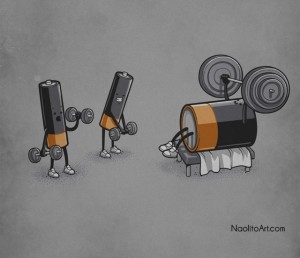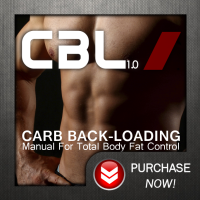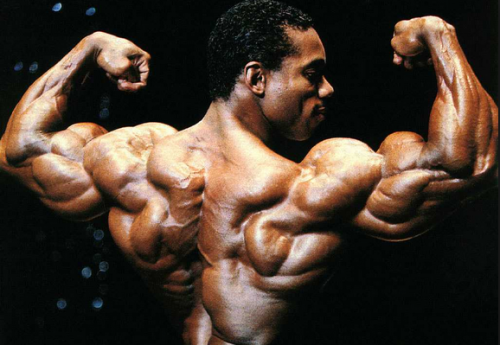In all probability, creatine is the most scientifically significant sports supplement of the past three decades. Several well-controlled studies have demonstrated a wide variety of benefits, which I’ll examine here. Most people, however—including supplement manufacturers and marketers—fail to understand what creatine does at the cellular level. In their material, as a result, they make claims we know to be false.
Creatine is not something to be trifled with. What you have to realize is that altering your creatine levels affects your body at the most intimate and microscopic levels. This can cause changes in nearly every cell inside your body.
A word of warning before we begin: This article delves deeply into the science of creatine and what it does at the cellular level. You don’t need to know this information, but since so many crappy blogs and pseudo-experts provide such inaccurate information on the subject, my goal here is to greatly expand our communal understanding of creatine and its role in the body. In Part 2, I’ll go into its day-to-day advantages and optimal dosing strategies.
What is Creatine?
I’ve read and heard countless times that creatine is the active transport of ADP back into ATP. While vague, this concept is brilliantly simple. It’s the same statement I read in FLEX magazine thirty years ago, and it’s been preserved perfectly throughout the interwebs by bro-science gurus ever since. I’ll admit to having used this same explanation myself for the sake of avoiding further discussion simply because it’s so damned elegant—but what the hell does it even mean?
First, a bit of history. Creatine isn’t a recent discovery. We’ve known about it for over a hundred years[1], and we’ve even known, for the majority of those hundred years, that supplementing with extra creatine can be beneficial[2-4]. Old-school supplementation entailed eating meat. In modern times, we can just buy a canister of grainy-white powder, mix it with water, and chug to our heart’s content. Compared to what’s possible naturally, this lets us take our creatine in mega-doses.
ADP and ATP stand for adenosine di- and adenosine tri-phosphate, respectively. ATP is the energy currency of your cells, and ADP results from the breakdown of ATP, which releases a phosphate molecule and ADP. ADP is then recycled, a phosphate is reattached, and ATP is formed again. On the surface, it’s a simple process.
Each of your cells contains mitochondria, which are dedicated energy producers. Mitochondria convert fatty-acids, ketones, and glucose into ATP via the infamous tricarboxylic acid (TCA) cycle, which you likely know as either the Krebs cycle or the citric acid cycle.
At rest, mitochondria don’t actually emit ATP or absorb ADP—which can be recycled into ATP in mitochondria[5-8]. Instead, creatine interacts with an enzyme system called creatine kinase (CK) that’s located on the outer surface of mitochondria. It then picks up a phosphate molecule from ATP in the mitochondria—turning the ATP into ADP[9-13]. Once the creatine grabs a phosphate, it’s then called creatine phosphate.
Creatine phosphate then delivers the phosphate to the area of the cell that does work, where, once again, creatine kinase removes the phosphate from creatine phosphate and combines it with ADP at the source of work. This converts the ADP back into ATP. Essentially, creatine transports the energy produced by mitochondria directly to the working parts without invoking a long series of chemical steps. It’s elegant, amazing, and efficient.
At its most basic level, creatine is the material that keeps all of our cells supplied with energy through a very efficient mechanism, while keeping intracellular ADP levels extremely low.
Quick Energy
It’s important to keep intracellular ADP levels low, because as this concentration increases, cellular respiration decreases and can trigger the need for faster energy[14-17]. In other words, ADP buildup influences how soon the glycolytic cycle is turned on during intense bursts of work. By keeping ADP levels low and recycling ADP back into ATP at the site of work, you can produce peak power for a slightly longer period of time. This is the second major advantage of creatine within the cell.
When you try to produce a large amount of power in a very short timeframe—during an Olympic lift, high-intensity repetitions, or the acceleration portion of a sprint—your muscle cells (especially your myofibrils) need excess energy fast. This is where the first of three energy systems comes into play. 
Cells have three energy systems. One of these is aerobic, and the other two are anaerobic. Of the two anaerobic energy systems, most people know about the glycolytic system, where glucose is burned rapidly to produce ATP. The other, which actually kicks in before the glycolytic cycle, is the ATP-Creatine-Phosphate (ATP-CP) system[18-21]. When you ramp up power production quickly, your cells need ATP at a rate higher than free creatine can supply by grabbing a phosphate molecule and delivering it to the myofibril to get turned into ATP and then burned.
In contrast, when intense activity begins from rest, we already have a huge store of ATP and creatine phosphate. The cells burn through the ATP stores, and creatine phosphate recycles the resulting ADP into ATP rapidly, but CP becomes exhausted in the process. Within cells, ATP levels never fully deplete, even at fatigue. Creatine phosphate levels, however, can become almost totally exhausted[22-23].
A Bigger Battery
Think of the ATP-CP system as a battery. During rest, your cells build a surplus of CP and ATP as it reaches equilibrium. Then, when it’s go time, you can tap into this surplus for rapid, almost free energy, because burning up the CP continues to prevent the buildup of ADP—which can decrease energy production when levels get too high.
This is one of the reasons why creatine supplementation gives you a boost. Supplementing with creatine can increase CP levels by roughly 20 percent[24-26]. This gives you a bigger battery when you need to produce massive amounts of power in very short periods of time.
This, however, is only a minor component. This battery is fast acting, only lasting long enough for the glycolytic cycle to ramp up—which, in turn, only lasts long enough for the oxidative system to ramp up[27-28]. These three aren’t completely isolated—they all can contribute energy throughout exercise or work—but they each have a sweet spot where they produce the majority of the energy for the entire system.
 Since ATP-CP acts on such a relatively short timeframe (5 seconds[29]), it’s critical for resistance-type training, sprinting, and HIIT. This can be seen through research: creatine supplementation does almost nothing to enhance endurance in performance[30-34], but even relatively short exposure to supplementation can increase sprint and power performance[35-43].
Since ATP-CP acts on such a relatively short timeframe (5 seconds[29]), it’s critical for resistance-type training, sprinting, and HIIT. This can be seen through research: creatine supplementation does almost nothing to enhance endurance in performance[30-34], but even relatively short exposure to supplementation can increase sprint and power performance[35-43].
This is one of the rare occasions when I’ll say that it’s possible that supplementation beats training. Through various regulatory mechanisms—and from vast amounts of data on athletes, coupled with mathematical models—it does not seem possible to train the ATP-CP system directly. It’s always tied with the peak output and timing of the glycolytic cycle[44-46]. Whatever the peak output is at which you train your lactic acid threshold, the ATP-CP system simply adjusts to reach the same exact peak, only in a shorter amount of time. In other words, the ATP-CP system only acts to bridge the first five seconds of high-output performance, in order to allow your glycolytic energy system to ramp up. Training may not be able to do anything to specifically alter the ATP-CP system in isolation.
Supplementation, however, seems to have the ability to do this.
Conclusion
If you didn’t know exactly what creatine did in the body, you should have a pretty firm grasp at this point. It is, quite simply, harkening back to the words of FLEX from 30 years ago regarding the active transport of ADP back into ATP. FLEX, at the time, just left out all the details—and bro-science has been happy to pass this explanation along without trying to understand what that statement actually means.
In next week’s installment, instead of dealing with the technicalities of creatine as an energy substrate, I’ll explain how creatine can make you bigger, stronger, smarter and even help you live longer.
The Ultimate Guide To Creatine Supplementation Part 2
The Ultimate Guide To Creatine Supplementation Part 3
References:
- Folin O, Denis W. Protein metabolism from the standpoint of blood tissue analysis: third paper; further absorption experiments with especial reference to the behavior of creatine and creatinine and to the formation of urea. J Biol Chem. 1912;12:141-162.
- Bloch K, Shoenheimer R. The metabolic relation of creatine and creatinine studied with isotopic nitrogen. J BioZ Chem. 1939;131:111-118.
- Chanutin A. The fate of creatine when administered to man. J Biol Chem. 1926;67:29-34.
- Hoberman HD, Sims EA, Peters JH. Creatine and creatinine metabolism in the normal male adult studied with the aid of isotopic nitrogen. J BioZ Chem. 1948;172:45-51.
- Klingenberg M, Pfaff E. 1966. In: Regulation of Metabolic Processes in Mitochondria. Tager JM, editor, p. 180. Elsevier, Amsterdam.
- Meisner H, Klingenberg M. Efflux of adenine nucleotides from rat liver mitochondria. J Biol Chem. 1968 Jul 10;243(13):3631-9.
- Klingenberg M. The ADP-ATP translocation in mitochondria, a membrane potential controlled transport. J Membr Biol. 1980 Sep 30;56(2):97-105. Review.
- Klingenberg M. The ADP and ATP transport in mitochondria and its carrier. Biochim Biophys Acta. 2008 Oct;1778(10):1978-2021.
- Bessman SP, Geiger PJ. Transport of energy in muscle: the phosphorylcreatine shuttle. Science. 1981 Jan 30;211(4481):448-52. Review.
- Wallimann T. Bioenergetics. Dissecting the role of creatine kinase. Curr Biol. 1994 Jan 1;4(1):42-6.
- Meyer RA, Sweeney HL, Kushmerick MJ. A simple analysis of the “phosphocreatine shuttle.” Am J Physiol Cell Physiol 1984; 246: C365–C377.
- Perry CG, Kane DA, Herbst EA, Mukai K, Lark DS, Wright DC, Heigenhauser GJ, Neufer PD, Spriet LL, Holloway GP. Mitochondrial creatine kinase activity and phosphate shuttling are acutely regulated by exercise in human skeletal muscle. J Physiol. 2012 Nov 1;590(Pt 21):5475-86.
- Bessman SP. The creatine-creatine phosphate energy shuttle. Annual Review of Biochemistry. 1985;54:831–862.
- Balaban RS. Regulation of oxidative phosphorylation in the mammalian cell. Am J Physiol. 1990 Mar;258(3 Pt 1):C377-89. Review.
- Korzeniewski B. Theoretical studies on the regulation of oxidative phosphorylation in intact tissues. Biochim Biophys Acta. 2001 Mar 1;1504(1):31-45. Review.
- From AH, Zimmer SD, Michurski SP, Mohanakrishnan P, Ulstad VK, Thoma WJ, Uğurbil K. Regulation of the oxidative phosphorylation rate in the intact cell. Biochemistry. 1990 Apr 17;29(15):3731-43.
- Saks VA, Kongas O, Vendelin M, Kay L. Role of the creatine/phosphocreatine system in the regulation of mitochondrial respiration. Acta Physiol Scand. 2000 Apr;168(4):635-41.
- Bangsbo J, Graham TE, Kiens B, Saltin B. Elevated muscle glycogen and anaerobic energy production during exhaustive exercise in man. J Physiol. 1992;451:205-27.
- Smith JC, Hill DW. Contribution of energy systems during a Wingate power test. Br J Sports Med. 1991 Dec;25(4):196-9.
- Serresse O, Simoneau JA, Bouchard C, Boulay MR. Aerobic and anaerobic energy contribution during maximal work output in 90 s determined with various ergocycle workloads. Int J Sports Med. 1991 Dec;12(6):543-7.
- Boulay MR, Lortie G, Simoneau JA, Hamel P, Leblanc C, Bouchard C. Specificity of aerobic and anaerobic work capacities and powers. Int J Sports Med. 1985 Dec;6(6):325-8.
- Bangsbo J, Madsen K, Kiens B, Richter EA. Effect of muscle acidity on muscle metabolism and fatigue during intense exercise in man. J Physiol. 1996 Sep 1;495 ( Pt 2):587-96.
- Sargeant AJ. Structural and functional determinants of human muscle power. Exp Physiol. 2007 Mar;92(2):323-31. Epub 2007 Jan 25. Review.
- Greenhaff PL, Bodin K, Soderlund K, Hultman E. Effect of oral creatine supplementation on skeletal muscle phosphocreatine resynthesis. Am J Physiol. 1994 May;266(5 Pt 1):E725-30.
- Harris RC, Söderlund K, Hultman E. Elevation of creatine in resting and exercised muscle of normal subjects by creatine supplementation. Clin Sci (Lond). 1992 Sep;83(3):367-74.
- Hultman E, Söderlund K, Timmons JA, Cederblad G, Greenhaff PL. Muscle creatine loading in men. J Appl Physiol. 1996 Jul;81(1):232-7.
- Bangsbo J, Krustrup P, González-Alonso J, Saltin B. ATP production and efficiency of human skeletal muscle during intense exercise: effect of previous exercise. Am J Physiol Endocrinol Metab. 2001 Jun;280(6):E956-64.
- Smith JC, Hill DW. Contribution of energy systems during a Wingate power test. Br J Sports Med. 1991 Dec;25(4):196-9.
- Maughan RJ, Gleeson M, Greenhaff PL. Biochemistry of exercise and training. Oxford: Oxford University Press, 1997.
- Terjung RL, Clarkson P, Eichner ER, Greenhaff PL, Hespel PJ, Israel RG, Kraemer WJ, Meyer RA, Spriet LL, Tarnopolsky MA, Wagenmakers AJ, Williams MH. American College of Sports Medicine roundtable. The physiological and health effects of oral creatine supplementation. Med Sci Sports Exerc. 2000 Mar;32(3):706-17.
- Balsom PD, Harridge SD, Soderlund K, Sjodin B, Ekblom B. Creatine supplementation per se does not enhance endurance exercise performance. Acta Physiol Scand. 1993 Dec;149(4):521-3.
- Engelhardt M, Neumann G, Berbalk A, Reuter I. Creatinine supplementation in endurance sports. Med Sci Sports Exerc. 1998;30:1123-9.
- Cooper R, Naclerio F, Allgrove J, Jimenez A. Creatine supplementation with specific view to exercise/sports performance: an update. J Int Soc Sports Nutr. 2012 Jul 20;9(1):33.
- Vandebuerie F, Vanden Eynde B, Vandenberghe K, Hespel P. Effect of creatine loading on endurance capacity and sprint power in cyclists. Int J Sports Med. 1998 Oct;19(7):490-5.
- Greenhaff PL, Casey A, Short AH, Harris R, Soderlund K, Hultman E. Influence of oral creatine supplementation of muscle torque during repeated bouts of maximal voluntary exercise in man. Clin Sci (Lond). 1993 May;84(5):565-71.
- Kilduff LP, Vidakovic P, Cooney G, Twycross-Lewis R, Amuna P, Parker M, Paul L, Pitsiladis YP. Effects of creatine on isometric bench-press performance in resistance-trained humans. Med Sci Sports Exerc. 2002 Jul;34(7):1176-83.
- Becque MD, Lochmann JD, Melrose DR. Effects of oral creatine supplementation on muscular strength and body composition. Med Sci Sports Exerc. 2000 Mar;32(3):654-8.
- Balsom, PD, Ekblom B, Soderlund K, Sjodin B, Hultman, E. Creatine supplementation and dynamic high-intensity exercise. Scand J Med Sci Sports. 1993;3:143-9.
- Becque M, Lochmann JD, Melrose D. Effect of creatine supplementation during strength training on 1-RM and body composition. Med Sci Sports Exerc. 1197;29:S146.
- Balsom PD, Soderlund K, Sjodin B, Ekblom B. Skeletal muscle metabolism during short duration high-intensity exercise: influence of creatine supplementation. Acta Physiol Scand. 1995 Jul;154(3):303-10.
- Hoffman JR, Stout JR, Falvo MJ, Kang J, Ratamess NA. Effect of low-dose, short-duration creatine supplementation on anaerobic exercise performance. J Strength Cond Res. 2005 May;19(2):260-4.
- Smith JC, Stephens DP, Hall EL, Jackson AW, Earnest CP. Effect of oral creatine ingestion on parameters of the work rate-time relationship and time to exhaustion in high-intensity cycling. Eur J Appl Physiol Occup Physiol. 1998 Mar;77(4):360-5.
- Kreider RB, Ferreira M, Wilson M, Grindstaff P, Plisk S, Reinardy J, Cantler E, Almada AL. Effects of creatine supplementation on body composition, strength, and sprint performance. Med Sci Sports Exerc. 1998 Jan;30(1):73-82.
- Gastin PB, Lawson DL. Influence of training status on maximal accumulated oxygen deficit during all-out exercise. Eur J Appl Physiol. 1994;69:321-30.
- Baker JS, McCormick MC, Robergs RA. Interaction among Skeletal Muscle Metabolic Energy Systems during Intense Exercise. J Nutr Metab. 2010;2010:905612.
- Gastin PB. Energy system interaction and relative contribution during maximal exercise. Sports Med. 2001;31(10):725-41. Review.









Recent Comments